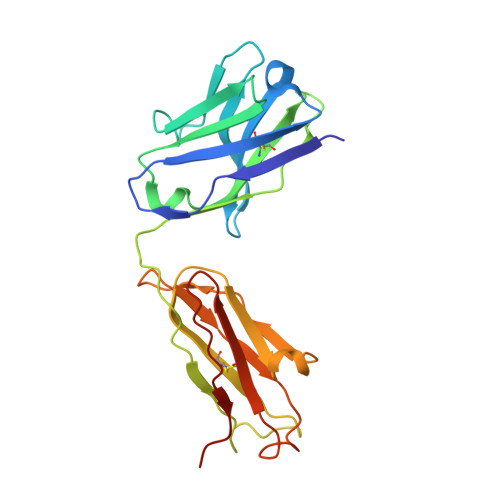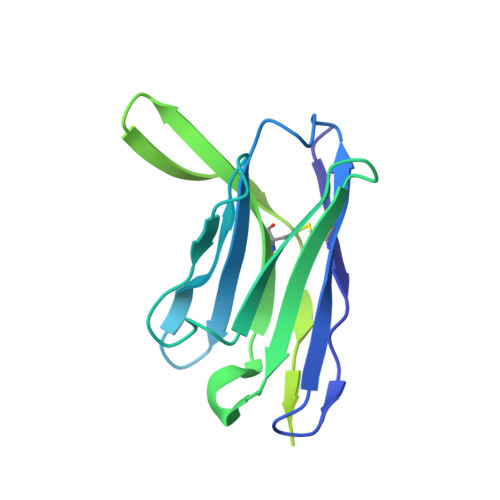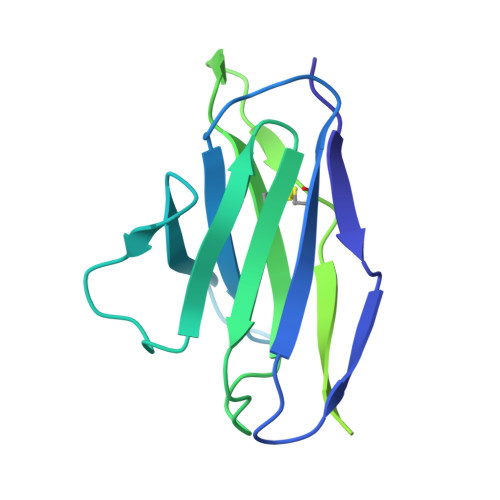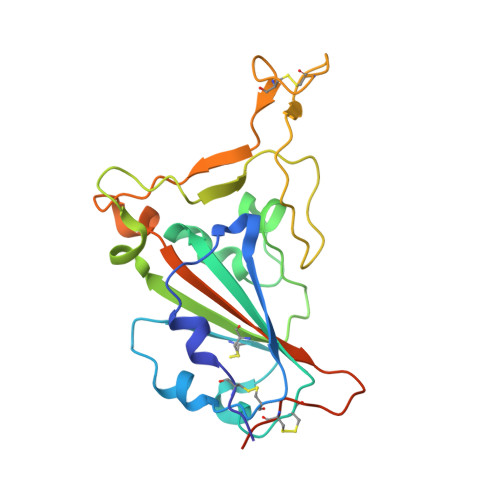Atlas of currently available human neutralizing antibodies against SARS-CoV-2 and escape by Omicron sub-variants BA.1/BA.1.1/BA.2/BA.3.
Huang, M., Wu, L., Zheng, A., Xie, Y., He, Q., Rong, X., Han, P., Du, P., Han, P., Zhang, Z., Zhao, R., Jia, Y., Li, L., Bai, B., Hu, Z., Hu, S., Niu, S., Hu, Y., Liu, H., Liu, B., Cui, K., Li, W., Zhao, X., Liu, K., Qi, J., Wang, Q., Gao, G.F.(2022) Immunity 55: 1501-1514.e3
- PubMed: 35777362
- DOI: https://doi.org/10.1016/j.immuni.2022.06.005
- Primary Citation of Related Structures:
7X1M - PubMed Abstract:
SARS-CoV-2 Omicron variant has presented significant challenges to current antibodies and vaccines. Herein, we systematically compared the efficacy of 50 human monoclonal antibodies (mAbs), covering the seven identified epitope classes of the SARS-CoV-2 RBD, against Omicron sub-variants BA.1, BA.1.1, BA.2, and BA.3. Binding and pseudovirus-based neutralizing assays revealed that 37 of the 50 mAbs lost neutralizing activities, whereas the others displayed variably decreased activities against the four Omicron sub-variants. BA.2 was found to be more sensitive to RBD-5 antibodies than the other sub-variants. Furthermore, a quaternary complex structure of BA.1 RBD with three mAbs showing different neutralizing potencies against Omicron provided a basis for understanding the immune evasion of Omicron sub-variants and revealed the lack of G446S mutation accounting for the sensitivity of BA.2 to RBD-5 mAbs. Our results may guide the application of the available mAbs and facilitate the development of universal therapeutic antibodies and vaccines against COVID-19.
Organizational Affiliation:
School of Life Science, Division of Life Sciences and Medicine, University of Science and Technology of China, Hefei, Anhui 230027, China; CAS Key Laboratory of Pathogen Microbiology and Immunology, Institute of Microbiology, Chinese Academy of Sciences, Beijing 100101, China.





















